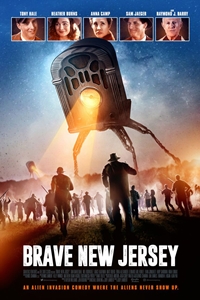Author Jeannette Walls wrote her astonishing memoir “The Glass Castle” in 2005, and her book became a sensation. It spent years on The New York Times Best Sellers List and is currently sitting at #1 for Print/E-Book Nonfiction as well as Paperback. Jeannette’s work garnered director Destin Daniel Cretton’s (“Short Term 12” (2013)) attention, and he has brought her book to life on the big screen! “The Glass Castle” is now a feature film, starring Brie Larson as Jeannette, and Woody Harrelson and Naomi Watts play her parents, Rex and Rose Mary. Last week, Ms. Walls stopped in the Valley to host a screening of the film and sat down to speak with the Phoenix Film Festival as well. Ms. Walls talked about her time living in Phoenix as a kid, her reactions to watching her life portrayed on-screen and much more. “The Glass Castle” is rated PG-13, and it opens on Aug. 11.
PFF: Jeannette, you lived in Phoenix for a while as a kid. What did you enjoy about Phoenix?
JW: The warmth, the sun, the mountains, and people just felt very accepting. We lived in a largely Mexican neighborhood, and everyone was just so nice and friendly and embraced our family in a way that we weren’t always embraced. (After) moving to West Virginia, I missed the sunshine, the warmth and the openness. It’s a lot easier to be poor in a place that’s warm, than a place that’s cold.
PFF: In the movie, your fiancé, David (Max Greenfield), arm wrestles your dad, Rex (Harrelson). On-screen Jeannette (Larson) was very spirited in rooting for David to win, but what was going through her mind at that time?
JW: That scene was pivotal, because it was a battle: which side is Jeannette going to align herself with, David or Rex, and who is stronger? If David wins, that “means” that she can continue (her comfortable, prosperous) lifestyle (with him). If Rex wins, she’s got to acknowledge that he – in some way – is superior. So, that’s why she was so desperately cheering for David to win. It was to validate her choice. Rex knew that, and that’s why he popped David in the “snot locker”. Rex knew that he has to physically best David, because the physical (confrontation) was somehow an embodiment of emotions…of her lifestyle.
PFF: When you saw Woody and Naomi on-screen, what did they get right about your parents?
JW: Everything. It was breathtaking. I don’t have a single criticism. I mean, it was eerie to the degree in which these actors get inside people. As a writer, I’m more of an observer. I fancy myself as somebody who is astute on picking up mannerisms or whatever that I am observing, and Woody and Naomi just blew me out of the water. They (work) from the inside out. They get the heart and the soul of somebody, and they attach these physical movements to (the performances). The body language, the posture, the eyes. Taking to Sarah Snook (who plays my older sister, Lori) was a little bit weird, because looking into her eyes, it felt just like I was looking into my older sister’s. It was unreal.
My brother, Brian, talked to Josh Caras (who played him as a kid). I talked to Josh afterwards, and he said, “I didn’t need to talk to (Brian) that long. I got it.”
And he got it!
PFF: It’s remarkable how actors work.
JW: They understand. It’s a language that good actors speak, and this world that they inhabit. It’s almost like, and I hope that this doesn’t sound derogatory, but they are almost like wild animals. The level of intuition is staggering. It all comes together, and I didn’t expect that. I expected them to be good, but not that good. The thing about the performances is that no one was ever looking to make fun of anybody. That’s why I think the movie is filled with love.
PFF: So, your mom lives with your husband and you in Virginia. Does she live under your rules, or does she operate under own rules, or is it a mix of both?
JW: A little bit of both. I tried to make her live by my rules, but that just wasn’t working. We just got into too many fights. I built her a little cottage, and in no time at all, it was all filled up, because she is a hoarder. I didn’t realize it, because our houses were always burning down when I grew up. She collects everything, because she thinks everything is beautiful. She tells me that many artists are hoarders. Picasso was, and Andy Warhol was, but because they have so much money, they aren’t considered hoarders, but collectors. They can buy extra houses, and they see everything as beautiful. I eventually just hired somebody to clean up her place, because I was getting into too many fights, and now we have a better relationship than we ever had in our lives. She is an interesting, complicated and unique human being, and if I can let go of the disputes over housecleaning, she’s a lot of fun to be around.
PFF: That’s great that your relationship has grown stronger.
JW: Absolutely. My husband thinks that she’s one of the most interesting people that he’s ever met. He’s a great intellectual, and he said, “I’ve never met anyone as smart as your mother.”
She (has so much knowledge about life), but she has no idea what her own Social Security number is. If you ask her, she’ll say, “I don’t find my Social Number particularly interesting.”
So, if she loves something or has interest in it, she keeps it, whether it’s an object or information. She keeps it forever.
PFF: She has interesting philosophies of life and her own logic which was portrayed in the film.
JW: Absolutely. A logic that is cohesive within her world. It doesn’t make sense to most people, and she’ll say some things that are simultaneously absolutely inane and absolutely brilliant.
PFF: Yes, for instance, the hot dog scene, when young Jeannette asks Rose Mary for lunch. She replies that she wants to finish her painting first, because it will exist forever, while a hot dog will only last a few minutes.
JW: Yea, and it’s true! It’s true that art is more valuable than hot dogs. She’s also said that she considers buying paints the wisest investment in the world. For the price of paints and a canvas, you might get a million-dollar masterpiece. She’s right, but nobody thinks like that except for her.
PFF: The movie and the book primarily portray your relationship with your father, and your mom is seen as more of a supporting character. Was your mom more of a supporting character in real life, and did you like that the movie depicts her that way?
JW: Dad sucks all of the oxygen out of the room. The minute that he walks into a room, it is all about him, and it used to drive my mom nuts.
She would say, “I’m this talented artist, and I’m constantly battling for center stage.”
That was one of the (reasons) for their fights. Destin was just very smart in realizing that the book is about the relationship between the father and the daughter. I think Naomi realized that too. How do you be on screen with somebody who is that powerful and that potent? It’s not that Rose Mary plays second fiddle, but nobody can compete with my father, and nobody can compete with Woody Harreleson. I don’t know about you, but whenever Woody was on-screen, I could not pull my eyes off of him. He just exploded. I’ll be candid with you. I wasn’t sure whether Woody could capture the energy, but he did. He got it completely, and Naomi quickly understood that if you are costarring with Rex Walls - whether it’s in life or in a movie – you are going to be almost the supporting cast. Rose Mary was profound and fabulous, but Rex wouldn’t let anybody else be center stage.
PFF: It’s all on Rex.
JW: Always. Always, and the minute that it wasn’t, it would get it back on him.
Jeff – a member of the Phoenix Critics Circle – has penned film reviews since 2008 and graduated from ASU’s Walter Cronkite School of Journalism. Follow Jeff and the Phoenix Film Festival on Twitter @MitchFilmCritic and @PhoenixFilmFest, respectively.







































